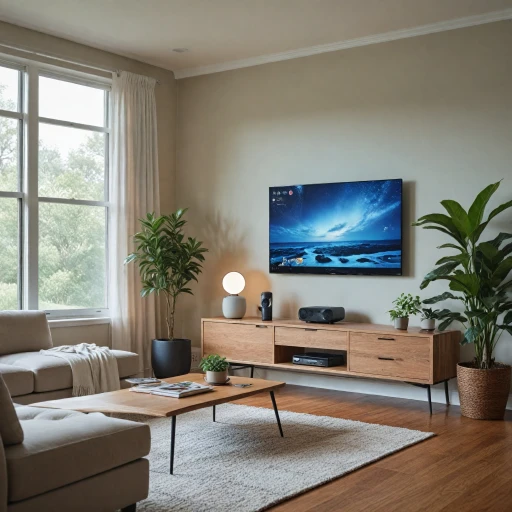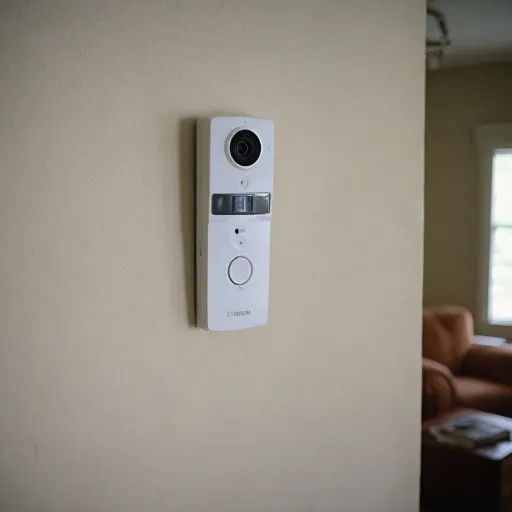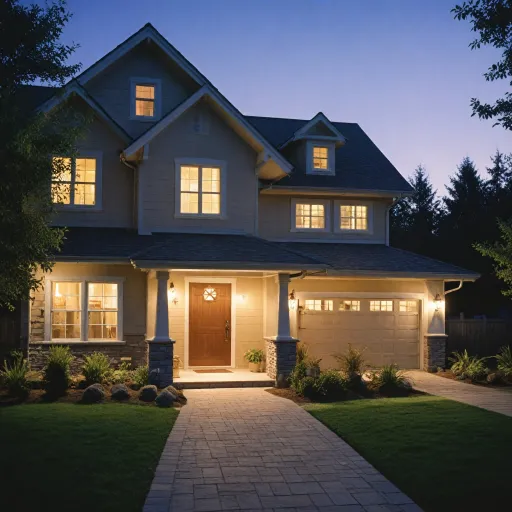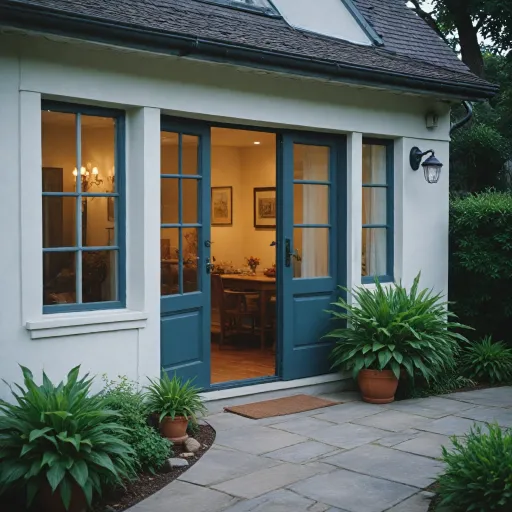
Understanding Zigbee Technology
Exploring the Underlying Technology of Zigbee
Zigbee technology stands out in the realm of wireless communication systems, particularly for home automation and security solutions. Designed with the capability to connect and manage various smart devices, Zigbee is essentially a low-power, wireless mesh network. This allows different smart products, such as motion sensors and smart plugs, to communicate seamlessly. One of the major advantages of Zigbee is its simplicity combined with efficiency. Unlike other wireless technologies, Zigbee is built to support devices with minimal battery life, making it particularly useful for motion sensors that remain in standby mode until motion is detected. Its ability to automatically turn devices on and off provides energy-saving benefits, which is a distinct advantage for those integrating multiple smart devices into their home security systems. Additionally, the technology's mesh network capability ensures that even if one device fails or a signal is interrupted, the communication can be rerouted through surrounding devices, maintaining network integrity. This ensures that your smart home devices are consistently operational without the need for constant direct communication with the main hub. Zigbee’s compatibility with various platforms such as Alexa, SmartThings, and Amazon Echo products, enhances its flexibility, allowing it to integrate with a wide range of home automation systems. Furthermore, these smart assistants can work together with Zigbee hubs to operate all connected devices, centralizing control for the user. For seamless integration with other security measures, such as IP cameras, exploring comprehensive integration guides can be beneficial, like this guide on integrating IP cameras with an 8-Channel DVR, which complements Zigbee's functionality. Understanding Zigbee technology sets the stage for exploring its practical applications, from enhancing seamless communication between smart sensors to the energy-saving benefits inherent in its efficient operation.Benefits of Zigbee Motion Detectors
Advantages and Efficiency of Zigbee Motion Sensors
Zigbee motion sensors are rapidly gaining traction in the world of smart home security, primarily due to their multiple benefits and robust performance. These smart devices are engineered to enhance efficiency while seamlessly interacting with your existing home automation systems.
- Energy Efficiency: Zigbee sensors are known for their low power consumption, which results in prolonged battery life. This is a significant advantage over other wireless technologies, as it reduces the frequency of battery replacement, making it not only eco-friendly but also cost-effective over time.
- Interoperability: The Zigbee protocol supports a wide range of smart home products, including those from major brands like Amazon and SmartThings. This level of support ensures that your new motion sensors can work harmoniously with various devices built into your home's ecosystem, such as the Amazon Echo and other compatible smart hubs.
- Seamless Integration: Zigbee motion detectors can be effortlessly integrated with a comprehensive range of devices. Whether it's smart lighting systems that automatically turn on a light when motion is detected, or security cameras for enhanced surveillance, these sensors provide a comprehensive solution.
- Adjustable Sensitivity: One of the appealing features of a Zigbee motion sensor is its adjustable sensitivity settings. This allows users to fine-tune the product according to their specific requirements, ensuring that the sensors are only triggered by meaningful movements within their range.
- Reduced Network Interference: Zigbee operates on a mesh network, allowing devices like the ThirdReality Zigbee motion detector to communicate with other gadgets efficiently without being susceptible to network congestion.
The Zigbee protocol's inherent capabilities make it a preferred choice for many homeowners looking to bolster their home security systems. By incorporating Zigbee motion sensors into your security infrastructure, you're equipping your home with cutting-edge technology designed to offer both performance and peace of mind. For a deeper dive into how these technologies can be optimized within your home security, consider exploring this comprehensive guide.
Integrating Zigbee Motion Detectors with Home Security Cameras
Seamless Connection with Your Home Security Cameras
Integrating Zigbee motion detectors with your home security cameras can greatly enhance your home's safety measures. Motion sensors built with Zigbee technology can communicate effectively with your security systems by detecting any movements around your property. One of the most significant advantages of using Zigbee motion sensors in home security is their ability to work with various devices through a hub, such as an Amazon Echo or SmartThings Aeotec. These hubs act as intermediaries, allowing your Zigbee sensors to connect seamlessly with your home security cameras. When motion is detected, these sensors can automatically turn cameras on, sending you real-time alerts and giving you peace of mind. Compatibility is another strength of Zigbee sensors. They support various platforms like Alexa, Google Assistant, and Homey Hubitat, making integration into your existing smart home ecosystem hassle-free. Additionally, products like the ThirdReality Zigbee sensor pack offer adjustable sensitivity options, so you can customize them to better fit your security needs. Another aspect to consider is battery life. Opting for motion sensors with extended battery life ensures that you won't have to frequently replace batteries, reducing maintenance hassles. Devices built with long-lasting batteries will provide consistent security coverage over longer periods. To ensure full functionality, a Zigbee hub is required. This hub will manage communication between your devices, ensuring that when motion is detected, your cameras can record events without delay. For those using hubs like Aeotec Homey or SmartThings, integration often requires little more than adding the sensor to your network, thanks to the compatibility these platforms provide. If you are experiencing issues with your motion detection or recording, know that effective troubleshooting strategies are available. For additional insights, explore this guide on dealing with night recording issues to help maintain your security system's efficacy.Installation and Setup Tips
Smart Installation Essentials for Zigbee Motion Sensors
When setting up your Zigbee motion detectors, a few straightforward steps can ensure a seamless integration with your existing home security system. As an essential part of the setup, consider the coverage area and positioning of your sensors. To achieve optimum efficiency, place them in strategic locations where motion is most relevant, such as entrance ways and hallways. A Zigbee hub is required to serve as the network's nucleus, linking the motion sensors to your security cameras and other smart devices. This connectivity allows devices built with Zigbee technology to communicate effortlessly. Brands like ThirdReality provide sensor packs that house multiple sensors, enabling coverage for expansive areas or multi-floor homes.Linking to Smart Home Environments
Zigbee motion sensors are exceptionally adaptable, meshing well with a variety of smart home assistants. Sync your sensors with assistants like Alexa and SmartThings for enhanced control. Through platforms such as Amazon Echo or SmartThings Aeotec, you can automate responses; for instance, having a smart plug automatically turn on a light when motion is detected.Battery and Sensitivity Adjustments
Consider the battery life as you proceed with installation. Typically, motion sensors rely on long-lasting power sources, though checking compatibility with third-party hubs like Homey Hubitat can help sustain efficiency. Most Zigbee motion sensors allow adjustable sensitivity, enabling you to refine the trigger settings based on usage and environmental conditions. Tweaking these settings is crucial to prevent unnecessary alerts.Final Checks and Recommendations
Once your Zigbee motion detectors are installed and linked to your security system, conduct thorough testing to ensure each component functions smoothly. Use motion detected to refine system accuracy and responsiveness. Ensure that the sensor Zigbee settings align with your security objectives, providing a holistic and robust home defense strategy. By meticulously following these steps, your home security architecture will be well-equipped to address any motion-related activity.Troubleshooting Common Issues
Addressing Common Challenges with Zigbee Motion Detectors
While Zigbee motion detectors are a smart addition to your home security setup, users may encounter some common issues. Here’s how to troubleshoot them effectively:
- Connectivity Issues: If your Zigbee motion sensor is not connecting to the hub, ensure that the hub is powered on and within range. Zigbee devices, like the ThirdReality Zigbee motion sensor, require a reliable connection to function properly. Consider using a Zigbee hub with strong signal support, such as the SmartThings Aeotec or Homey Hubitat.
- Motion Not Detected: If the sensor fails to detect motion, check the battery life. Low battery can affect performance. Also, verify that the sensor is positioned correctly and that its adjustable sensitivity settings are configured to suit your environment.
- Integration with Alexa or Echo Devices: For seamless integration with Amazon Alexa or Echo devices, ensure that the hub required is compatible. Some products may need additional setup steps in the Alexa app to automatically turn on lights or other devices when motion is detected.
- Interference from Other Devices: Zigbee operates on the 2.4 GHz frequency, which can be crowded. If you experience interference, try changing the channel on your Zigbee hub or relocating the hub away from other wireless devices.
- Firmware Updates: Regularly check for firmware updates for your sensor pack and hub. Updates can resolve bugs and improve functionality. Most hubs, like the SmartThings or Homey, offer automatic updates.
By addressing these common issues, you can ensure that your Zigbee motion detectors work efficiently, enhancing your home security system.
Future Trends in Zigbee and Home Security
Anticipating Future Innovations in Zigbee-Based Home Security
As technology continues to evolve, Zigbee motion detectors are expected to integrate even more seamlessly with a variety of smart home devices. These innovations will enhance your home's security, offering smarter and more efficient solutions. Let's explore some potential trends in this space.One key trend is the increasing interoperability between Zigbee-based products and other smart home systems, such as Amazon Alexa or Echo devices. This compatibility allows devices like the ThirdReality Zigbee motion sensors to automatically turn on lights or smart plugs when motion is detected, further boosting security and convenience. Additionally, enhanced integration with virtual assistants like SmartThings and Homey is expected, leveraging the unique capabilities of each platform.
Another development on the horizon is the improvement in battery life for devices within the Zigbee ecosystem. As users require longer-lasting sensors for a more reliable system, manufacturers are focusing on creating more energy-efficient products with adjustable sensitivity settings. This ensures that your motion detectors are not only responsive but also maintain performance over extended periods.
The future also holds promise for more compact and efficient sensor packs. As smart home environments grow more prevalent, consumers are demanding devices that not only perform well but also blend seamlessly into home aesthetics. This push will likely lead to more aesthetically pleasing designs without compromising on functionality.
The incorporation of advanced technologies into Zigbee hubs is another avenue for future improvements. With hubs like Aeotec and Homey Hubitat, the potential to enhance connectivity and performance across connected devices is significant. These hubs provide robust support, ensuring your home security system operates smoothly and efficiently.
Overall, the outlook for Zigbee motion detectors and smart home security systems is optimistic. With ongoing advancements and a focus on enhancing user experience, these systems will continue to offer secure and intelligent solutions for smart homes.













